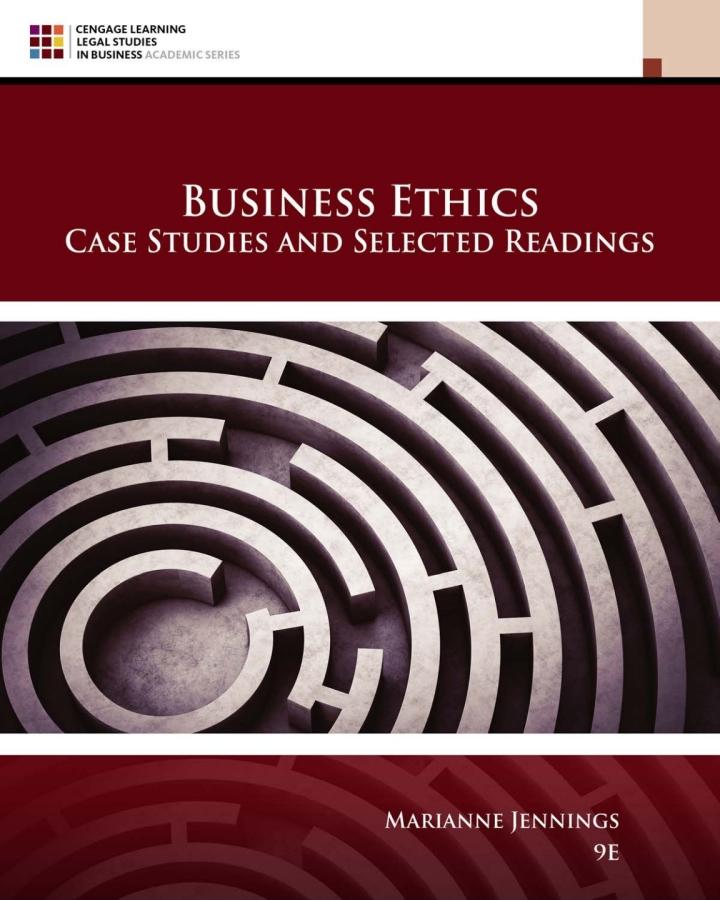Bhopal is a city in central India with a population, in 1984 , of 800,000 . Because
Question:
Bhopal is a city in central India with a population, in 1984 , of 800,000 . Because it was, at that time, home to the largest mosque in India, Bhopal was a major railway junction. Its main industries consisted of manufacturing heavy electrical equipment, weaving and printing cotton cloth, and milling flour. In 1969, American Union Carbide Corporation, a company headquartered in Danbury, Connecticut, reached an agreement with the Indian government for the construction of a Union Carbide plant in Bhopal. Union Carbide would hold a \(51 \%\) interest in the plant through its share of ownership of an Indian subsidiary of American Union Carbide. The agreement was seen as a win-win situation. India would have the plant and its jobs as well as the production of produce pesticides, a product needed badly by Indian farmers in order to increase agricultural productivity. In addition, Union Carbide also agreed that it would use local managers, who would be provided with the necessary skills and management training so that the plant would be truly locally operated. The plant used methyl isocyanate (MIC) gas as part of the production process for the pesticides. MIC is highly toxic and reacts strongly with other agents, including water.
Operation of a plant with MIC processes requires detailed monitoring as well as security processes to prevent sabotage. Although the plant began operations with high hopes, by 1980 the relationships were strained because the plant was not profitable. Union Carbide had asked the Indian government for permission to close the plant, but the government felt the products from the plant, as well as the jobs, were needed for the Indian economy. Sometime in the early morning hours of December 3, 1984, MIC stored in a tank at the Bhopal plant came in contact with water, and the result was a boiling effect in the tank. The backup safety systems at the plant, including cooling components for the tanks, did not work. The result was the toxic mixture began to leak, and workers at the plant felt a burning sensation in their eyes. The boiling of the water and MIC caused the safety valves on the tank to explode. Following the explosion, the white smoke from the lethal mixture escaped through a smoke stack and began to spread across the area to the city of Bhopal. As the gas spread, it wove its way through the shantytowns that were located near the plant. The occupants of these shantytowns were Bhopal's poorest. As the gas floated through these makeshift neighborhoods, 3,500 lives were lost and 200,000 were injured. The injuries included blindness, burns, and lesions in the respiratory system. The initial deaths and injuries were followed by long-term health effects. Of the women who were pregnant and exposed to the MIC, one-fourth either miscarried or had babies with birth defects. Children developed chronic respiratory problems. Smaller children who survived the toxic gas were sick for months and, weak from a lack of nutrition and ongoing illnesses, also died. MIC also produced strange boils on the bodies of many residents, boils that could not be healed. The problem of tuberculosis in the area was exacerbated by the lung injuries caused by the leaking MIC. In the year following the accident, the Indian government spent \(\$ 40\) million on food and health care for the Bhopal victims. Warren M. Anderson, Union Carbide's chairman of the board at the time of the accident, pledged that he would devote the remainder of his career to solving the problems that resulted from the accident. However, by the end of the first year, Mr. Anderson told Business Week, "I overreacted. Maybe they, early on, thought we'd give the store away. [Now] we're in litigation mode. I'm not going to roll over and play dead." 43 Following the accident, Union Carbide's stock fell sixteen points and it became, in the go-go 1980s, a takeover target. When GAF Corporation made an offer, Union Carbide incurred \(\$ 3.3\) billion in debt in order to buy \(56 \%\) of its own stock to avert a takeover. Through 1992, Union Carbide remained in a defensive mode as it coped with litigation, takeover attempts, and the actions of the Indian government in seeking to charge officers, including Anderson, with crimes. \({ }^{44}\) U.S. lawyers brought suit in the United States against Union Carbide on behalf of hundreds of Bhopal victims, but the case was dismissed because the court lacked jurisdiction over the victims as well as the plant. Union Carbide did settle the case with the Indian government for a payment of \(\$ 470\) million. There were 592,635 claims filed by Bhopal victims. The victims received, on average, about \(\$ 1,000\) each. The ordinary payment from the Indian government, as when a government bus harms an individual, is \(\$ 130\) to \(\$ 700\), depending upon the level of the injury. Individual awards were based on earning capacity, so, for example, widows of the Bhopal accident received \(\$ 7,000\).........................
Discussion Questions
1. Should the Bhopal plant have been operated using U.S. safety and environmental standards? What would the U.S. policy be on the shantytowns?
2. Should the case have been moved to the United States for recover?
3. List all of the costs of the accident to Union Carbide.
4. Evaluate Dow's position on the cleanup.
5. Later studies seem to indicate that the cause of the accident was sabotage. How does this affect your analysis?
Step by Step Answer:

Business Ethics Case Studies And Selected Readings
ISBN: 9780357453865
9th Edition
Authors: Marianne M. Jennings





